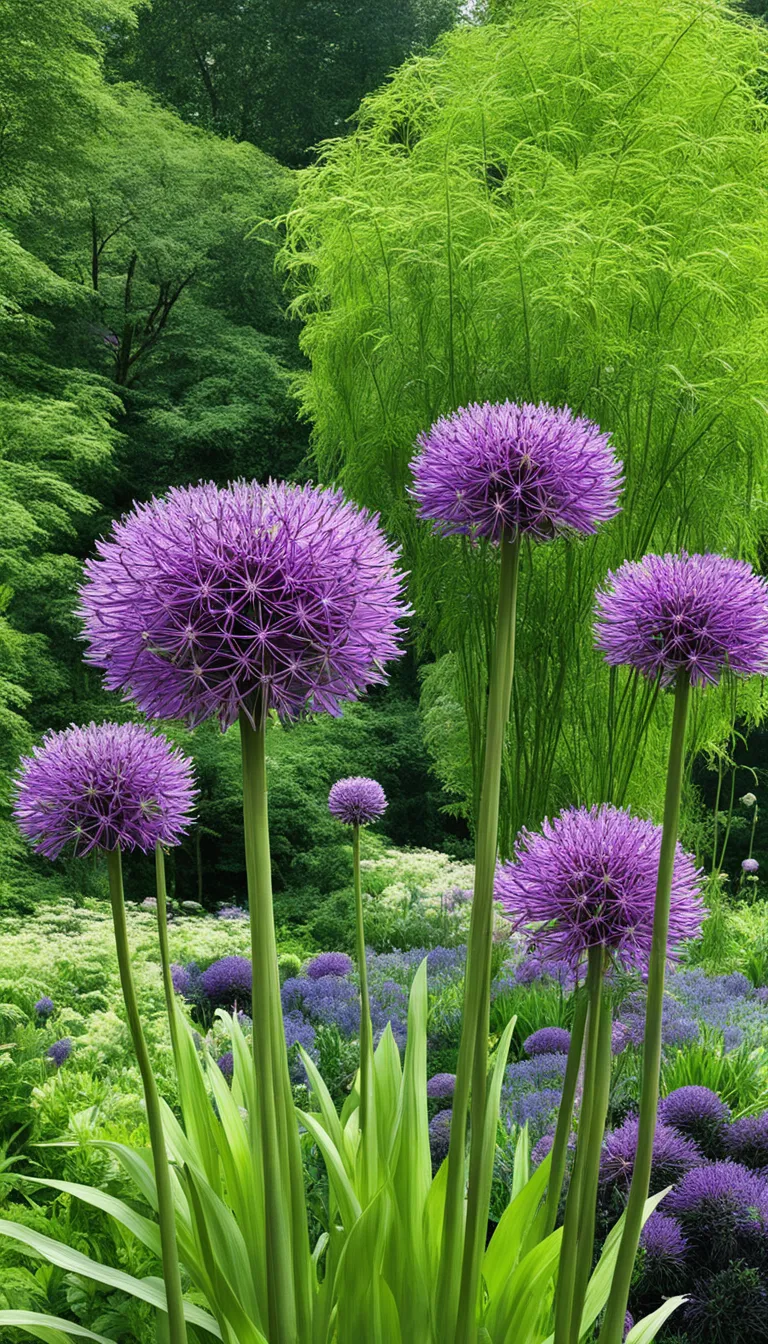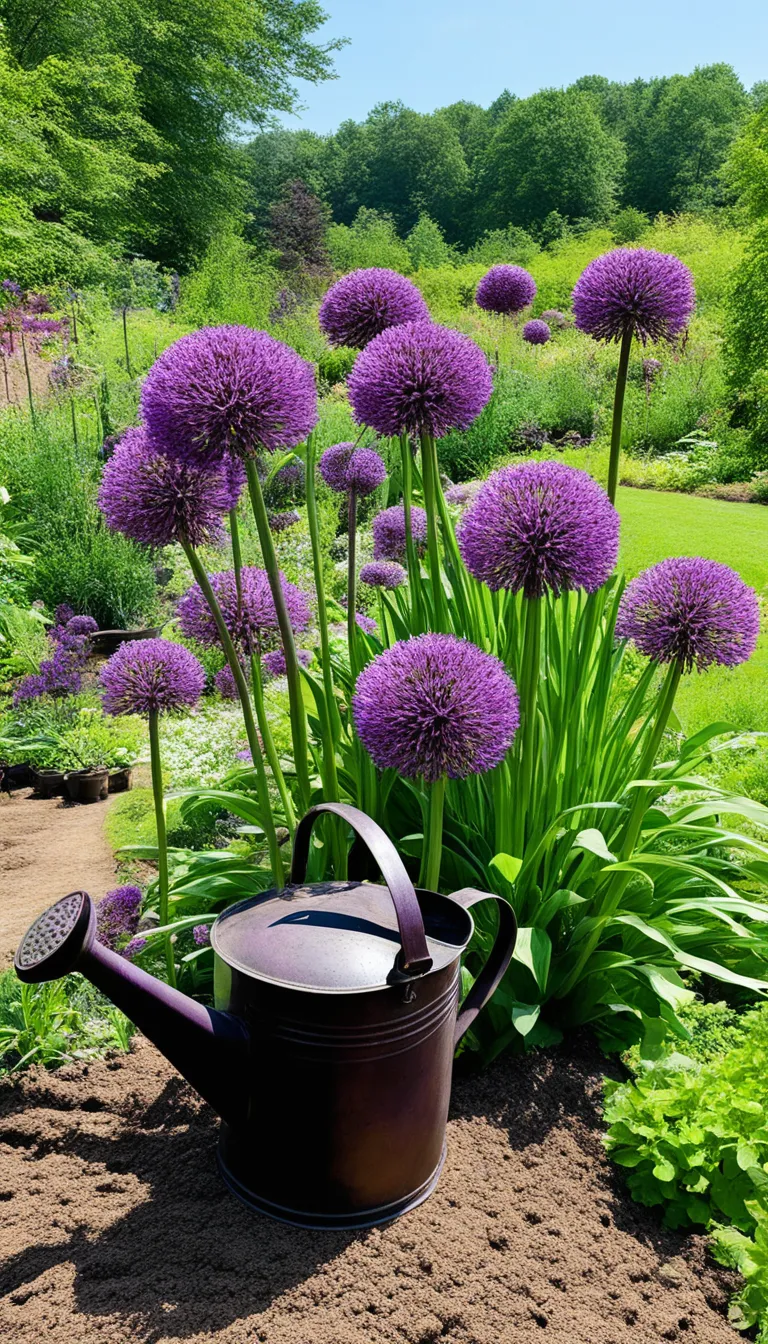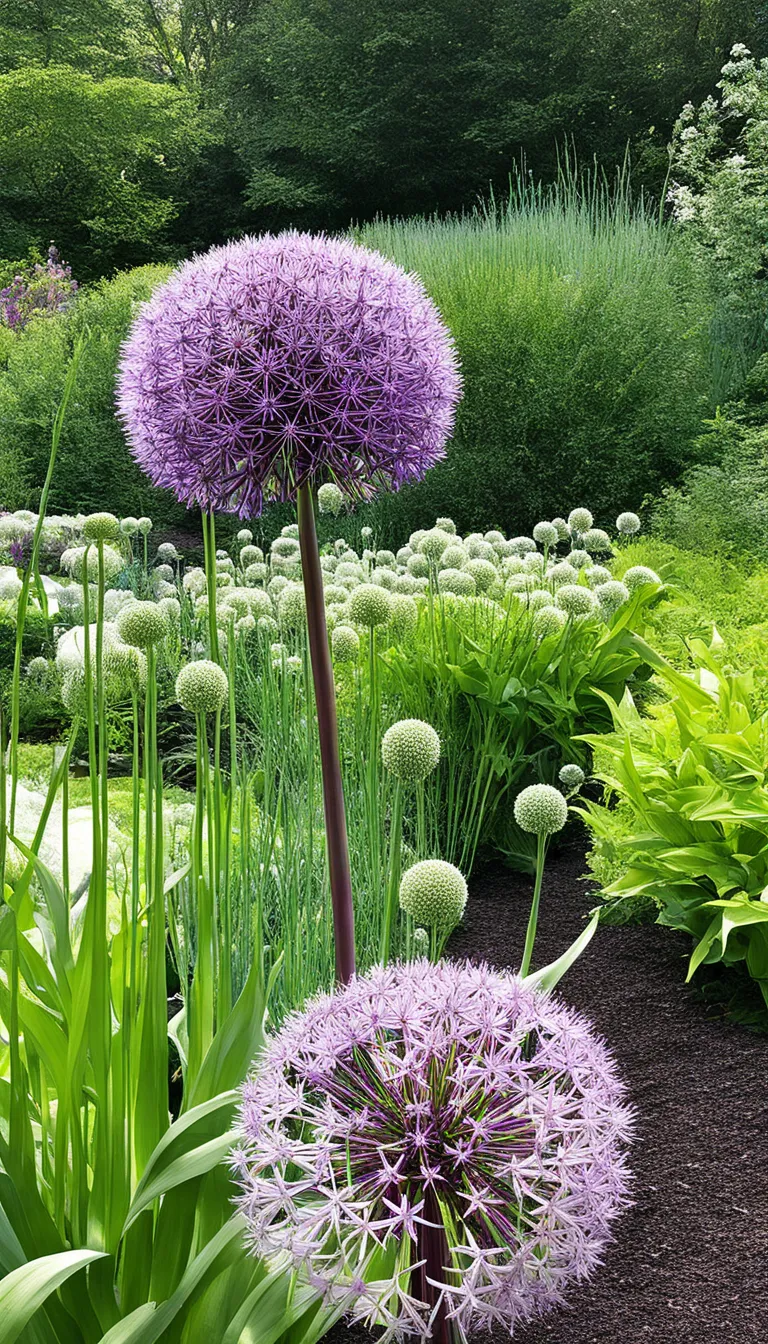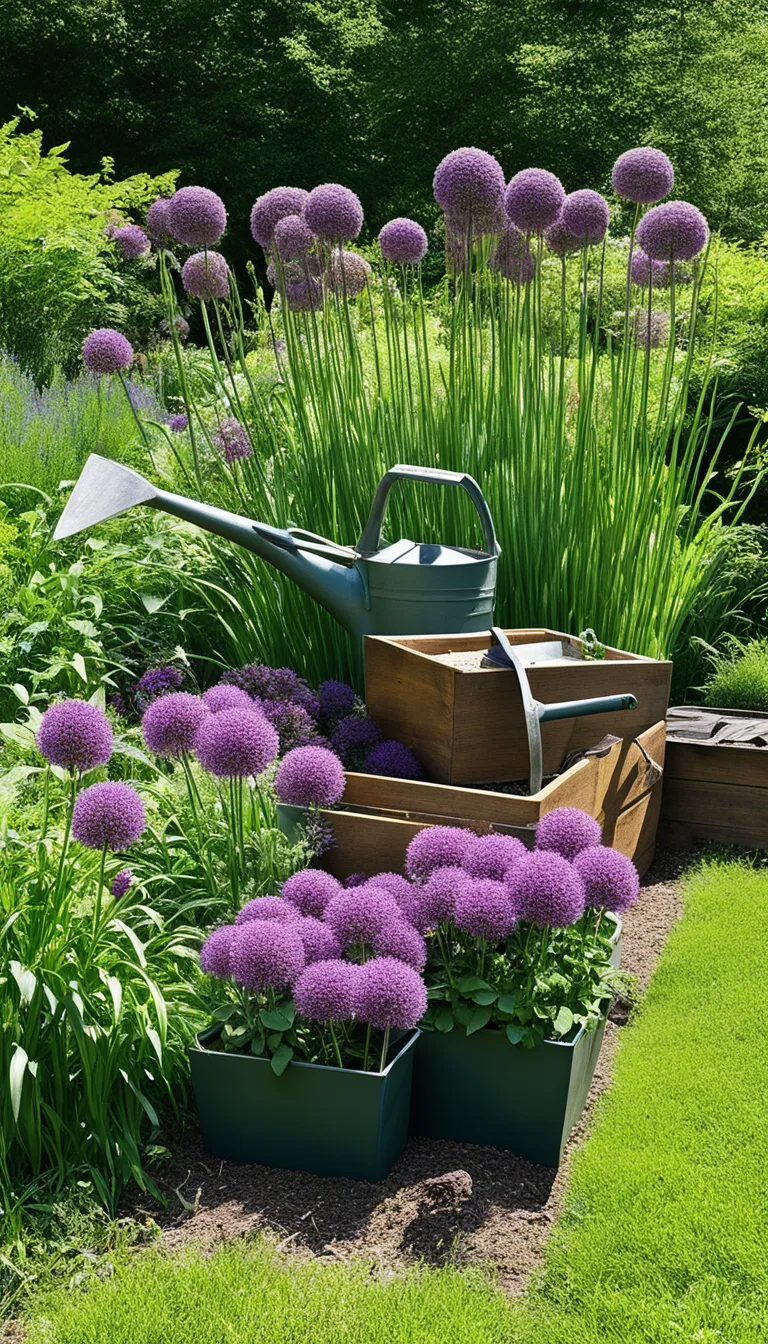Embark on a horticultural adventure and transform your garden with the allure of Alliums—ornamental onions that promise to deliver a burst of color and architectural elegance. With their dramatic globe-shaped flowers and wide range of sizes, Alliums are the perfect choice for gardeners looking to inject a sense of surprise and explosion into their landscapes.
But what exactly are Alliums? These perennial bulbs are part of the onion family, yet they are grown for their ornamental value rather than culinary uses. Imagine the amazement as these spheres of vibrant blooms rise above the garden, creating a fireworks display of purples, blues, whites, and yellows. Their ability to attract pollinators while deterring pests makes them a practical and visually appealing addition to any outdoor space.
When it comes to planting Alliums, the process is delightfully straightforward. Full sun exposure and well-drained soil are their basic needs. A little bit of patience will reward you with a spectacle that returns each year with renewed vigor. To help you get started, here’s a quick guide:
- Plant bulbs in early autumn, ideally 4-6 weeks before the ground freezes.
- Choose a spot that receives at least 6 hours of direct sunlight daily.
- Ensure the soil is well-draining to prevent bulb rot.
- Space bulbs 6-8 inches apart and plant them 3 times their diameter deep.
- Water sparingly, as Alliums do not require much moisture once established.
With these simple steps, you’ll soon enjoy the explosive beauty of Alliums as they take center stage in your garden. Whether you’re a seasoned gardener or a green-fingered novice, the world of Alliums awaits to enrich your outdoor canvas with their stunning spherical charm.

What is Allium?
Alliums, often referred to as ornamental onions, are a genus of flowering plants that belong to the Amaryllidaceae family. With their striking spherical blooms that sit atop tall, sturdy stems, they have become a favorite among gardeners and landscapers alike. These plants are not only known for their unique beauty but also for their resilience and low maintenance requirements.
Allium species range in size from small, delicate flowers to large, eye-catching globes that can become the centerpiece of your garden. Did you know that Alliums are also related to kitchen staples like onions, garlic, and chives? Yet, unlike their culinary cousins, ornamental Alliums are grown for their decorative appeal, which provides a burst of color from late spring to early summer.
Their flowers come in a variety of shades, including purples, blues, pinks, and whites, creating a palette that can complement any garden design. Furthermore, Alliums are pollinator-friendly plants, attracting bees, butterflies, and other beneficial insects to your garden, which is essential for promoting biodiversity.
- Easy to Grow: Alliums thrive with minimal fuss.
- Drought Tolerant: Once established, they require little water.
- Long-Lasting Blooms: Their flowers can last for weeks.
- Pest Resistant: These plants are rarely troubled by pests.
In summary, Alliums are a diverse and enchanting group of plants that can add surprise and explosion of color to your garden with their unique and lasting blooms. So why not consider adding some Allium magic to your outdoor space?

How to Care for Allium?
When it comes to nurturing Alliums, think of them as the low-maintenance friends in your garden. These ornamental onions crave just a few simple things to flourish and bring that surprise and explosion of color to your outdoor space. Let’s dive into the care essentials:
- Location: Choose a spot where they can bask in the glory of full sun. Alliums love to soak up the rays, and this is crucial for those vibrant blooms.
- Soil: Aim for well-drained soil. They detest having wet feet, so ensure that water can drain freely to avoid bulb rot.
- Watering: Keep the watering can in check; these beauties need minimal watering. Overwatering? A definite no-go!
- Fertilization: While not high-maintenance, a little snack of slow-release fertilizer at planting time can give them a boost.
- Aftercare: Post-bloom, resist the urge to cut back the foliage. Allow it to die back naturally, as this is when they store energy for the next year’s show.
Remember, the key to a stunning Allium display is as simple as a bit of sunshine, the right soil, and a touch of patience. With these tips, you’re on your way to creating an eye-catching spectacle that will have your neighbors doing a double-take!

What are the Allium Varieties?
Alliums come in a fabulous array of shapes, sizes, and colors, each bringing its own unique charm to the garden. Ever wondered what varieties might explode with color in your backyard? Let’s dive into the world of Alliums and discover the surprise they hold for garden enthusiasts.
For starters, the ‘Globemaster’ is a real showstopper with its large, violet spheres that can rise up to four feet tall. Imagine them as floral fireworks, ready to burst into bloom. Then there’s the ‘Purple Sensation’, with its star-shaped, purple flowers that create a galaxy of color in your garden.
But Alliums aren’t just about the big and bold. The ‘Drumstick’ Allium, or Allium sphaerocephalon, offers a more subtle beauty with its small, egg-shaped flowers that start green and mature to a deep maroon. This variety is like the quiet prelude to the explosive finale of larger Allium blooms.
- ‘Globemaster’: Large, round, violet flowers
- ‘Purple Sensation’: Star-shaped, purple flowers
- ‘Drumstick’: Small, egg-shaped, maroon flowers
- ‘Mount Everest’: White, star-shaped flowers reaching impressive heights
- ‘Gladiator’: Large, purple-blue flowers with a majestic presence
Are you looking for something truly unique? The ‘Hair’ Allium, or Allium vineale ‘Hair’, might just be the quirky addition your garden needs. With its wild, hair-like flowers, it’s sure to be a conversation starter!
Let’s not forget the Allium that’s perfect for borders and pots – the ‘Millenium’. This compact variety blooms with beautiful rosy-purple flowers and is known for attracting pollinators.
| Variety | Description | Height |
|---|---|---|
| ‘Globemaster’ | Large, violet spheres | Up to 4 feet |
| ‘Purple Sensation’ | Star-shaped, purple flowers | 2-3 feet |
| ‘Drumstick’ | Small, egg-shaped, maroon flowers | 1-2 feet |
| ‘Millenium’ | Rosy-purple flowers, great for pots | 1-1.5 feet |
In conclusion, the world of Alliums is rich and diverse, offering a stunning visual feast for any garden. Whether you prefer the grandeur of ‘Globemaster’ or the whimsical charm of ‘Hair’ Allium, there’s an Allium variety waiting to surprise and delight you!





